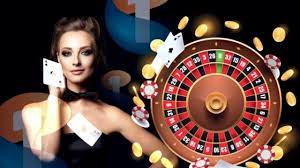Slot machines, often referred to as “one-armed bandits,” have been a staple of casinos and gaming establishments worldwide for over a hire bodyguard london. Their flashing lights, captivating sounds, and the thrill of a potential jackpot have made them one of the most popular forms of entertainment for players of all backgrounds. But what exactly are slot machines, and why do they hold such an enduring appeal? Let’s take a closer look at the mechanics, the history, and the psychology behind slot machines.
A Brief History of Slot Machines
The first-ever slot machine, the “Liberty Bell,” was invented in 1895 by Charles Fey, a mechanic from San Francisco. This early version of the slot machine featured three spinning reels and five symbols: horseshoes, diamonds, spades, hearts, and the iconic Liberty Bell. The goal was simple – line up three matching symbols to win a payout. The Liberty Bell became a sensation in bars and saloons, leading to the rapid growth of slot machines across the United States.
However, as the years passed, the simplicity of the original design evolved. Today’s slot machines come in a variety of forms, including video slots, progressive slots, and 3D slots. The evolution of slot machines has been heavily influenced by advances in technology, from mechanical reels to digital screens and sophisticated algorithms.
How Do Slot Machines Work?
At their core, slot machines operate based on a random number generator (RNG). This software ensures that the outcome of each spin is entirely random, making it impossible to predict or manipulate. The RNG generates thousands of numbers every second, and when a player presses the spin button, the RNG stops at a particular number, determining the result of that spin.
Modern slot machines typically feature three to five reels, with various symbols placed on each reel. Players win by matching symbols in specific patterns, known as paylines. These paylines can be straight, diagonal, or even zig-zagged, depending on the slot game.
Some machines also feature bonus rounds, free spins, and other interactive elements that enhance the gameplay experience. For example, video slots often have mini-games within the main game, where players can earn additional prizes or multipliers.
Types of Slot Machines
There are several different types of slot machines, each offering a unique experience. Here are the most common:
- Classic Slots – These are traditional three-reel machines that resemble the early Liberty Bell slots. They often feature symbols like fruits, bars, and sevens, and are perfect for players who enjoy a nostalgic, no-frills experience.
- Video Slots – Video slots are the modern, digital version of the slot machine. These games often feature multiple paylines, intricate graphics, and immersive themes based on movies, TV shows, and popular culture. Video slots usually come with bonus rounds, wild symbols, and scatter symbols, which add excitement and increase the chances of winning.
- Progressive Slots – Progressive slots offer players the chance to win a massive jackpot that increases every time someone plays the game without hitting the jackpot. The jackpot grows until someone eventually wins it. These machines can offer life-changing sums of money, but the odds of hitting the jackpot are usually quite low.
- 3D Slots – These games take video slots to the next level by incorporating 3D graphics and animation. 3D slots often feature detailed storylines and interactive gameplay that pull players into the game world.
- Multiline Slots – These machines offer more than one payline, giving players multiple ways to win on each spin. With the added paylines, these slots increase the excitement and the number of potential winning combinations.
The Psychology of Slot Machines
One of the main reasons slot machines are so popular is because they are designed to trigger specific psychological responses. The combination of flashing lights, sound effects, and the anticipation of a win creates an experience of near-miss scenarios, which can encourage players to keep playing.
The idea of “near wins” is powerful in slot design. When players almost hit a jackpot, it triggers a sense of excitement, leading them to believe that a win is just around the corner. This psychological effect, combined with the ability to control the speed and frequency of spins, contributes to the addictive nature of slot machines.
Additionally, the presence of bonuses and jackpots enhances the player’s desire to keep playing, as the rewards are often unpredictable. Slot machines are designed to keep players engaged by providing intermittent rewards, which can foster a sense of unpredictability and excitement.
Responsible Gambling and Slot Machines
While slot machines are a fun and thrilling way to pass the time, it is important to approach them with caution. Due to their unpredictable nature and the potential for addiction, players should always set limits on their time and money spent on slot machines. Many casinos and online gaming platforms offer responsible gambling tools, such as deposit limits, self-exclusion options, and time management reminders to help players stay in control of their gambling habits.
Conclusion
Slot machines have a rich history, a fascinating design, and an allure that draws millions of players to casinos every year. Their combination of chance, psychology, and excitement makes them one of the most iconic forms of gambling. Whether you’re spinning the reels in a land-based casino or playing online, the thrill of a slot machine is undeniably captivating. However, it’s always important to approach these games responsibly and to remember that gambling should be for fun, not a way to solve financial problems.
